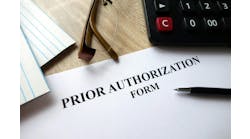At a time in healthcare when providers are being judged (sometimes harshly) by payers, both public and private, on their ability to engage and satisfy patients, the broad arena of patient engagement/patient satisfaction is becoming increasingly urgent. Differential reimbursement around patient satisfaction is becoming increasingly important across a variety of public and private payer payment regimens, and as value-based reimbursement becomes the norm, even the seemingly smallest elements around satisfaction will loom increasingly large when it comes to dollar rewards (and discounts).
In that regard, the folks at the Sharp Rees Stealy medical Group, a division of Sharp Healthcare, the integrated health system based in San Diego, have a hopeful story to tell. They have achieved for their organization a 96-percent patient satisfaction rating from their patients, and they attribute a portion of that high rating to their innovations around self-service. With such a large and busy group practice—Sharp Rees-Stealy encompasses more than 470 physicians, and 2,400 staff, in 21 locations—the medical group’s leaders understand that satisfying the needs and wants of their patients and consumers in the highly sophisticated, highly competitive San Diego healthcare market is not in any way an automatic process.
As a result, Sharp Rees-Stealy’s leaders have been working with the Cambridge, Mass.-based Vecna, implementing a number of that company’s solutions around patient engagement and patient satisfaction. One of the anchoring technologies, in that regard, has been the deployment of self-service check-in kiosks at all 21 of the medical group’s care sites.
Recently, Gail Kimche, director of clinic operations, spoke with HCI Editor-in-Chief Mark Hagland regarding this set of innovations. Below are excerpts from their interview.
What made you and your colleagues decide to implement self-service check-in?
It’s a technology that enhances our patient experience. We started delving into it. It’s a good match for us wanting to e a leader in our area around new technology; it’s a differentiator. We’re in a city that’s very competitive, and it really gave our patients a choice when it comes to checking in, so it was all about enhancing the patient experience.
What was the timeframe around this set of innovations?
We started brainstorming in 2010 around what we wanted to offer our patients. It’s a journey. We had our first kickoff meeting with Vecna in August 2011. The formal launch was August 2013, that’s when we went live. We did it location by location—from August through December of 2013. We have a lot of Vecna kiosks in our clinical facilities. So we do a lot of check-ins.
These were your first kiosks, generally speaking?
Yes. This is new technology for us. The patient comes in. They walk over to the kiosk and literally check themselves in for their appointment. The kiosk will identify the patient and find the appointment; it will present demographic information. And they can confirm or edit or change information. The kiosk will tell them if there’s a co-pay; it will take that co-pay by credit card. It will also search for any outstanding balances and ask for payment for that. And then it writes all that information back into our practice management system. It also offers to sign a condition of registration, it gives the patient to sign that there.
Do they also electronically sign, or print out, a HIPAA waiver?
No, we don’t use it for that purpose. But other organizations have. We designed the workflow to be focused on the patient registration process.
The average length of time that it takes a patient to check in electronically is about 100 seconds. We don’t have any metric comparing that length of time to the minutes it used to take patients to check in, on paper. But when I work with patients in line and bring them to the kiosk, they are checked in and called to see the physician while others in front of them are still in line. So what used to take 3-4 minutes takes about 100 seconds. Average manual check-in is probably 3 minutes.
What has the response been from your organization’s patients?
It’s generally been very positive. When I looked at patient satisfaction—we did it for that reason. It’s not measurable for us in hard numbers. So I wanted to find a way to figure out how our patients were feeling about it. So I took a year’s worth of comments from Press Ganey, which we use. And I did a search on kiosk comments; and it was overwhelmingly positive. “I loved the check-in- process,” “I loved the kiosk,” “I didn’t have to stand in line.”
The technology itself is not complex—you just have to make sure it stays up and running, right?
Yes. It does take monitoring and some management and research to make sure everything works out. We work with Vecna to solve any problem, and to make improvements.
How many kiosks are located at any particular site?
The site with the most has four. Some of the smaller clinics have one. All of our clinics vary in size, from 10,000 square feet to 100,000 feet. The average is either two or three. And some of our very busy sites have two kiosks on a floor. At that particular site, that would have four altogether.
Can you say you’ve seen any effect on the efficiency of your front-desk staff as a result?
I can say that it’s been a support to the staff. The staff would be very upset if we took it away. It takes the pressure off. When their lines are long, they will direct people to the kiosk. People who are untrained can help to check patients in, it’s that straightforward. And when a receptionist is by themselves, one person, during lunchtime breaks or early in the mornings, it’s really helpful. And we collect a lot of money at our kiosks, both their co-pays and their past-due balances. We were never quite sure how that might work, and it worked like a charm.
The other category we’re very happy with is patient updates. We do have patients updating their addresses, phone numbers, adding their e-mails if we don’t have them; and they’re able to update their insurance, too. So we get a copy of their new insurance card as well.
Do you have any advice to offer others who might be considering this set of innovations?
Only to consider it! It is a positive. The patients are delighted once they’ve used it. Sometimes they have to be enticed the first time, but once they’re used to it, particularly the patients who return regularly for certain types of services such as ob/gyn or certain types of therapy, those patients really love the experience of it.


